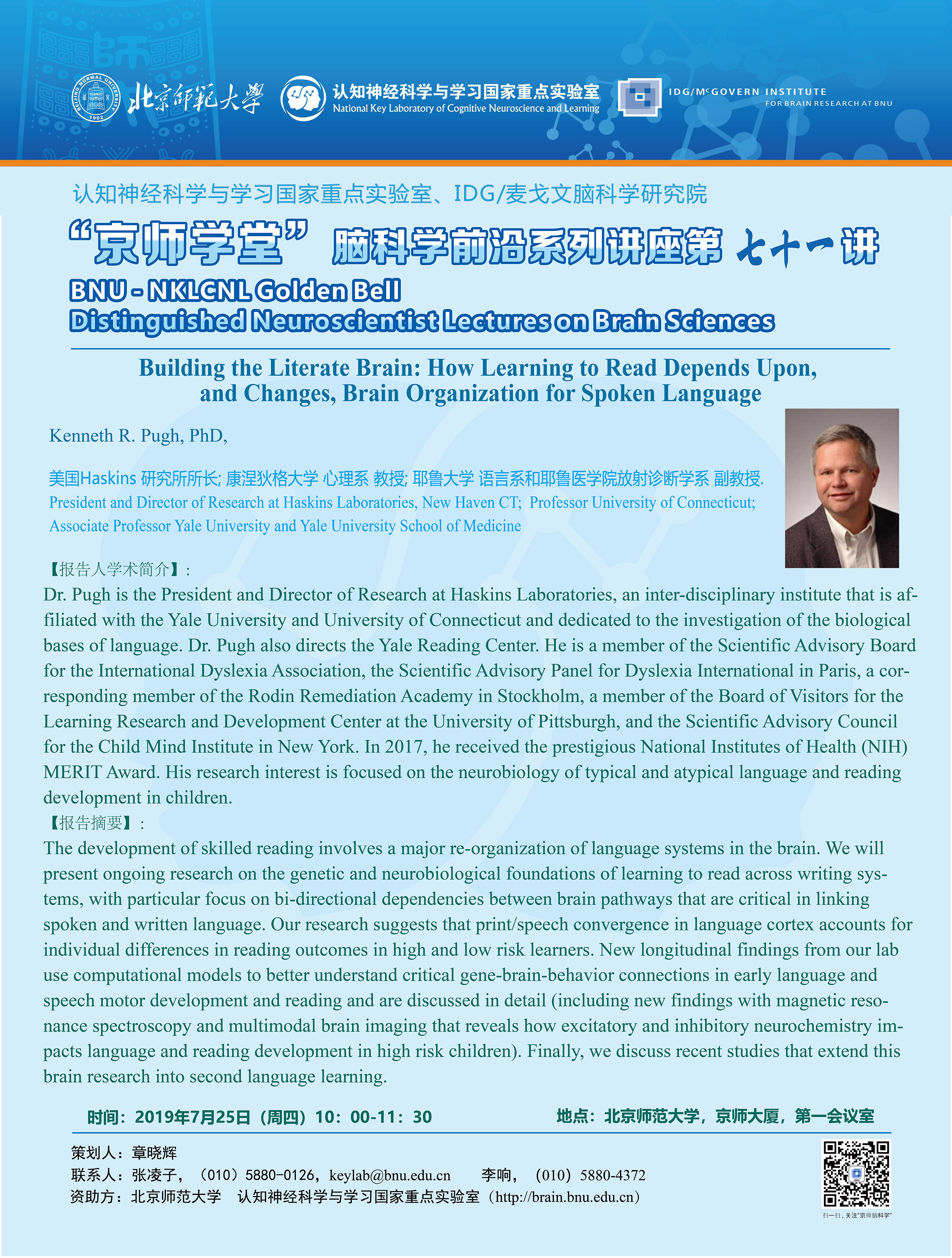Building the Literate Brain: How Learning to Read Depends Upon, and Changes, Brain Organization for Spoken Language
报告人:Kenneth R. Pugh, PhD,
President and Director of Research at Haskins Laboratories
Professor, University of Connecticut
Associate Professor, Yale University
美国Haskins 研究所所长
康涅狄格大学心理系教授
耶鲁大学副教授
报告时间:2019年 7月25日 (周四)10:00-11:30
报告地点:京师大厦第一会议室(三层)
报告人简介:
Dr. Pugh is the President and Director of Research at Haskins Laboratories, an inter-disciplinary institute that is affiliated with the Yale University and University of Connecticut and dedicated to the investigation of the biological bases of language. Dr. Pugh also directs the Yale Reading Center. He is a member of the Scientific Advisory Board for the International Dyslexia Association, the Scientific Advisory Panel for Dyslexia International in Paris, a corresponding member of the Rodin Remediation Academy in Stockholm, a member of the Board of Visitors for the Learning Research and Development Center at the University of Pittsburgh, and the Scientific Advisory Council for the Child Mind Institute in New York. In 2017, he received the prestigious National Institutes of Health (NIH) MERIT Award. His research interest is focused on the neurobiology of typical and atypical language and reading development in children.
报告摘要:
The development of skilled reading involves a major re-organization of language systems in the brain. We will present ongoing research on the genetic and neurobiological foundations of learning to read across writing systems, with particular focus on bi-directional dependencies between brain pathways that are critical in linking spoken and written language. Our research suggests that print/speech convergence in language cortex accounts for individual differences in reading outcomes in high and low risk learners. New longitudinal findings from our lab use computational models to better understand critical gene-brain-behavior connections in early language and speech motor development and reading and are discussed in detail (including new findings with magnetic resonance spectroscopy and multimodal brain imaging that reveals how excitatory and inhibitory neurochemistry impacts language and reading development in high risk children). Finally, we discuss recent studies that extend this brain research into second language learning.
